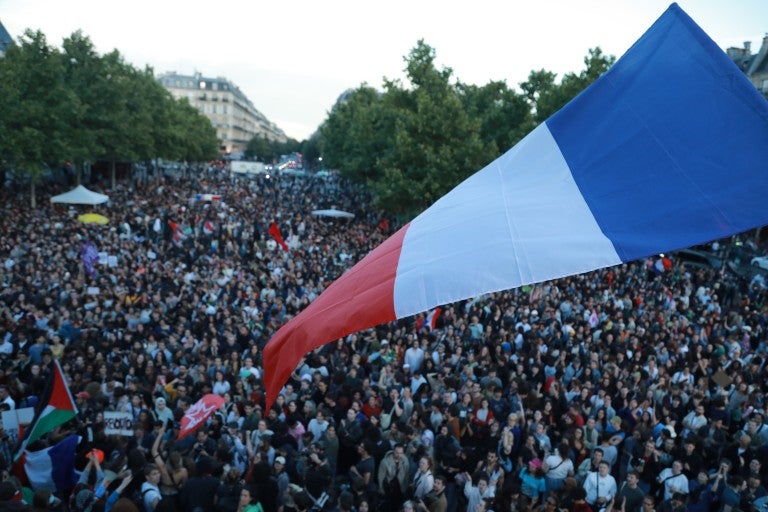April 26, 2023
It’s been 75 years since the modern State of Israel declared its independence – long before many authors writing about its birthday were born. But as new declassified historical documents emerge and the only democracy in the Middle East confronts new challenges, three authors have published books that shed light on untold stories of the nation’s origins and cast the nation in a new light.
1. Impossible Takes Longer: 75 Years After Its Creation, Has Israel Fulfilled Its Founders Dreams?
Daniel Gordis, author of Israel: A Concise History of a Nation Reborn, celebrates the overall success of Israel, points out its failures, and toasts its future as a Jewish and democratic state in his latest book: Impossible Takes Longer: 75 Years After Its Creation, Has Israel Fulfilled Its Founders’ Dreams?
“Israel mesmerizes the world because it is an almost magical story,” he writes.
Seventy-five years ago, “one of the world’s oldest peoples had created one of the world’s newest countries. Jews, long synonymous with the image of victims on call, had taken up arms and taken their own destiny back into their own hands. Israel mesmerizes because it is one of the greatest stories of resilience, of rebirth and of triumph in human history. Israel fascinates because it is without question the most astoundingly successful example of a national liberation movement.”
He measures the Jewish state’s success against the founders’ goals – metrics that make a lot more sense than its struggles with religious pluralism and the Israeli Palestinian conflict. In doing so, he reminds readers why Israel was created in the first place – to create a place that Jews could call home. He explores the Declaration of Independence, the brand of ethnic democracy that sets Israel apart from liberal democracies around the world, and the vigilance required to protect it.
“When it comes to democracy, therefore, there is no room for Israeli complacency,” he writes presciently. “The challenge facing Israelis is to ensure that not only does Israel not slide into autocracy but that it moves steadily forward to make its already formidable democracy ever more robust.”
2. Twelve Tribes: Promise and Peril in the New Israel
In Twelve Tribes: Promise and Peril in the New Israel, author and journalist Ethan Michaeli, paints a rich portrait of Israel’s diversity reported over the course of four visits to Israel – one in 2014 and three more between 2017 and 2018.
His subjects include Israeli millennials seizing opportunities in the start-up nation, ultra-Orthodox Haredim, Holocaust survivors, Arab citizens of Israel, immigrants from Ethiopia who were tortured as “Prisoners of Zion” and former Russian refuseniks – all of whom fled to Israel – and Jewish settlers and Palestinians vying to thrive in the West Bank.
Michaeli keeps his opinions to himself. An American-born author who lives in Chicago and has family in Israel, he of all people recognizes that cities and countries are complex and only the people who live there should speak to its problems and propose solutions.
But he leverages his American identity and Israeli ancestry to cross borders and access communities. He shares poignant observations, bringing readers alongside him on his journey, that begins in the aftermath of two 2014 conflicts: one between Israel and Hamas terrorists; the other between police and protesters in Ferguson, Missouri.
Twelve Tribes gives voice to the hundreds of men and women who Michaeli meets along the way and demonstrates that Israel is no different than any other country whose future lies in the hands of its diverse population. “My goal was to document Israel at this crucial moment. “Twelve Tribes” serves as an analogy for the often fraught dynamics of ethnic traditions and political affiliations of modern Israel.
3. Palestine 1936: The Great Revolt and the Roots of the Middle East Conflict
Oren Kessler’s Palestine 1936 explores the history of conflicts surrounding Israel through the lens of one that is often overlooked -- the Arab Revolt between 1936 and 1939, in which more than 500 Jews and at least 5,000 Arabs were killed as European Jewish immigration to then-Mandatory Palestine clashed with the movement for Palestinian statehood.
“It was then that Zionist leaders began to abandon illusions of Arab acquiescence, to confront the unnerving prospect that fulfilling their dreams of sovereignty might mean forever clinging to the sword,” Kessler writes.
“It was then – not in 1948 – that Palestine’s Jews consolidated the demographic, geographic, and political basis of their state-to-be. And it was then that portentous words like 'partition' and 'Jewish state' first appeared on the international diplomatic agenda.”
Kessler cites recently declassified documents detailing the secret hearings between successive British commissions and advocates for the creation of the Jewish state, as well as other source materials. In doing so, he points out the many clues of what’s to come for the Jewish people.
For example, he includes Chaim Weizmann’s eerily prescient testimony to the Peel Commission in which he insists that “six million Jews need a home”—a numerical figure that keeps coming up and ultimately becomes the number of Jews lost in the Holocaust.

